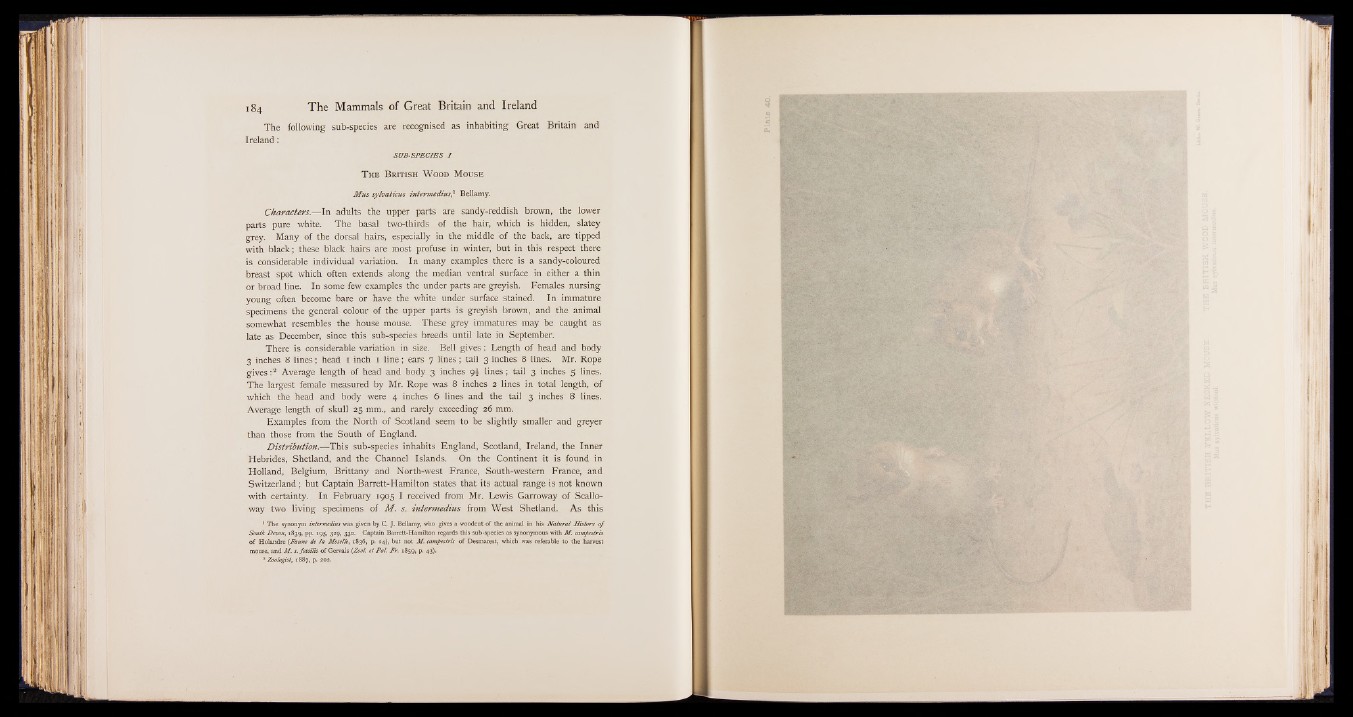
The following sub-species are recognised as inhabiting Great Britain and
Ireland:
s u b -s p e c i e s 1
T he B ritish Wood Mouse
Mus sylvaticus intermedins?- Bellamy.
Characters.—In adults the upper parts are sandy-reddish brown, the lower
parts pure white. The basal two-thirds of the hair, which is hidden, slatey
grey. Many of the dorsal hairs, especially in the middle of the back, are tipped
with black; these black hairs are most profuse in winter, but in this respect there
is considerable individual variation. In many examples there is a sandy-coloured
breast spot which often extends along the median ventral surface in either a thin
or broad line. In some few examples the under parts are greyish. Females nursing
young often become bare or have the white under surface stained. In immature
specimens the general colour of the upper parts is greyish brown, and the animal
somewhat resembles the house mouse. These grey immatures may be caught as
late as December, since this sub-species breeds until late in September.
There is considerable variation in size. Bell g ive s: Length of head and body
3 inches 8 lines; head 1 inch 1 line; ears 7 lines; tail 3 inches 8 lines. Mr. Rope
gives: 2 Average length of head and body 3 inches 9^ lines; tail 3 inches 5 lines.
The largest female measured by Mf. Rope was 8 inches 2 lines in total length, of
which the head and body were 4 inches 6 lines and the tail 3 inches 8 lines.
Average length of skull 25 mm., and rarely exceeding 26 mm.
Examples from the North of Scotland seem to be slightly smaller and greyer
than those from the South of England.
D istribution.—This sub-species inhabits England, Scotland, Ireland, the Inner
Hebrides, Shetland, and the Channel Islands. On the Continent it is found in
Holland, Belgium, Brittany and North-west France, South-western France, and
Switzerland; but Captain Barrett-Hamilton states that its actual range is not known
with certainty. In February 1905 I received from Mr. Lewis Garroway of Scalloway
two living specimens of M. s. intermedins from West Shetland. As this
1 The synonym intermedins was given by C. J. Bellamy, who gives a woodcut of the animal in his N atu ra l H istory o f
South Devon, 1839, pp. 195, 329, 330. Captain Barrett-Hamilton regards this sub-species as synonymous with M . eampestris
of Holandre (Faune de la Moselle, 1836, p. 24), but not M . eampestris of Desmarest, which was referable to the harvest
mouse, and M . s.fo ssilis of Gervais (Zool. et P a l. F r. 1859, p. 43).